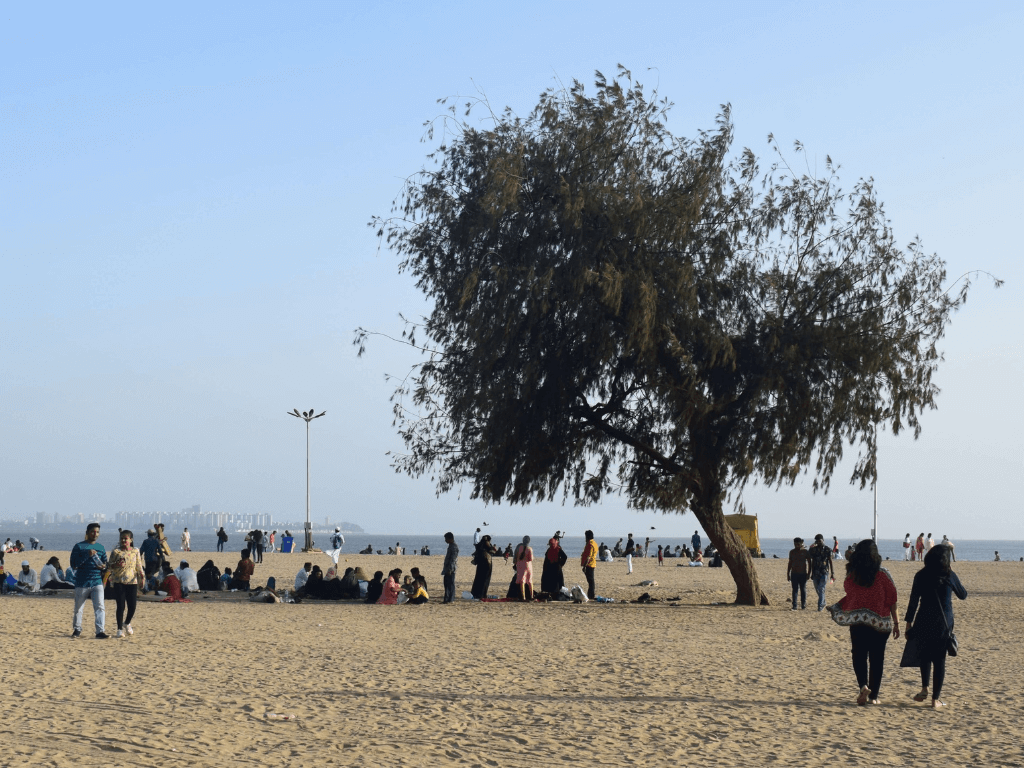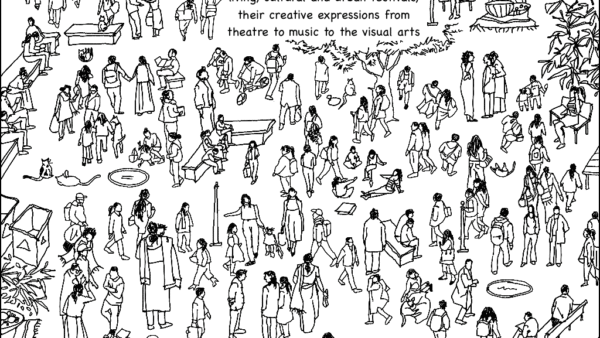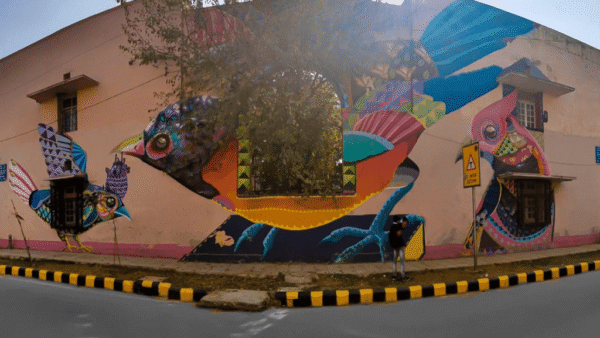In Kolkata, where the gruesome rape and murder of a trainee doctor on August 9 led to massive outrage across the country, an event later that month showed why it is critical to address less heinous incidents. The launch of the book Habib Tanvir and His Legacy in Theatre, organised by the Kolkata Centre for Creativity, came under fire from theatre professionals like Sameera Iyengar. Calling out the organisers for including theatre artiste Suman Mukhopadhyay in the programme, though he had invited an under-trial in two rape cases, Sudipto Chatterjee, for a stage performance in April, Iyengar asked: “How do we collectively create a world of theatre where women feel safe and respected?”
Why only theatre? From hospitals to schools and colleges, corporate offices to construction sites, rickety old buses to shiny new metros, cinema halls to restaurants, streets and gardens, women have been the target of male advances, attacks and violence. Both subtle and fiendish. The women who spoke up against Mukhopadhyay had to face vicious trolling and verbal attacks “simply for demanding that the theatre community take violence against women as a serious issue,” Iyengar pointed out in her letter.
Down south, the Malayalam film industry’s most popular heroes have been hit by accusations of sexually exploiting or raping women in the industry, or ignoring such cases, as the Justice Hema Committee report revealed last month. The malaise was so widespread that it could knock the bottom out of a flourishing industry, veterans like actor Mohanlal, who stepped down from the executive panel of the Association of Malayalam Movie Artists, reckoned.
Across India, there were more than 31,000 reported rapes in 2022, according to official data – higher than the average 25,000 cases registered in 2012 when the Nirbhaya case in Delhi shook the country. On an average, a woman is raped or molested every 15 minutes somewhere in India, the 2018 data tells us.[1] It is more than that. It’s the threat of rape, the ubiquitousness of molestation and sexual harassment that gets to us.
As women, we are tired of raising issues of inequality, harassment, discrimination and violence, and having them constantly treated as secondary, Iyengar poignantly spoke for millions of us. A lewd gesture, a catcall, glances in rearview mirrors of rickshaws and cabs, a seemingly accidental brush, flashing and suchlike are seemingly less offensive acts of sexual violence. These, when dismissed and unaddressed, enable the culture of sexual violence, a culture that normalises rape till a particularly gruesome one happens. It is necessary to demand justice in individual cases – as the medical community and others have in the Kolkata case – but it is equally essential to address other, subtler, forms of sexual violence.
Invariably, every episode of outrage against rape puts the spotlight on safety at workplaces, in homes, in schools and colleges, during transit, and at leisure locations. Safety is critical to our lives but is it enough to lead meaningful lives, with freedom? The more we fight for safer cities, the more it feels like an unending struggle. Though essential, it keeps us from going beyond safety to demand that our spaces have other attributes such as accessibility and comfort.
Safety should be the bare minimum guarantee to us in every space we occupy. Safety is necessary but not sufficient. Our spaces must offer us comfort, pleasure, fulfilment, an ease of being and belonging, an entitlement even.
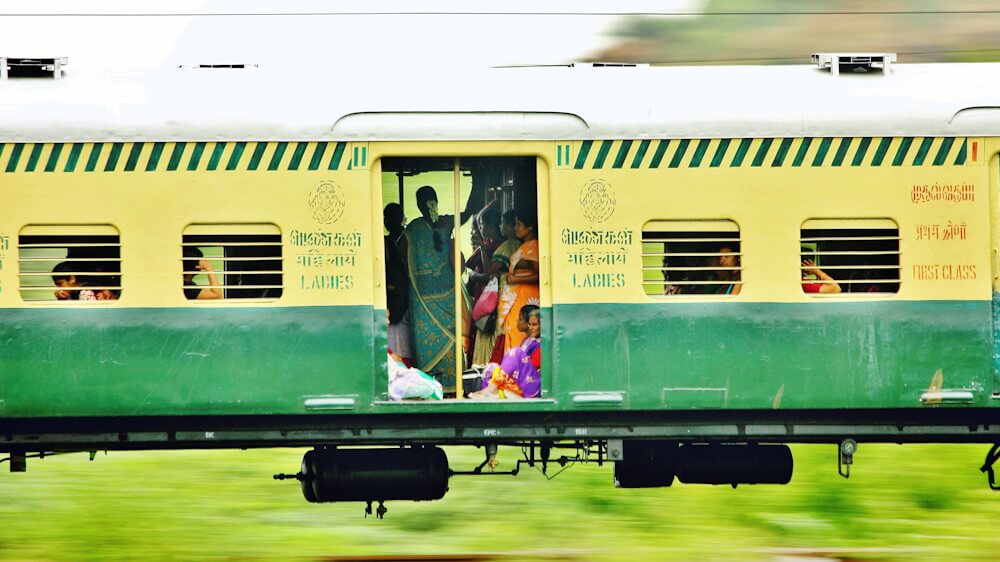
Photo: Simply CVR/Wikimedia Commons
Safety non-negotiable but low-hanging fruit
Every now and then, the society’s collective conscience is awakened by a particularly fiendish rape like the Nirbhaya case in Delhi in December 2012 or the RG Kar Hospital case in Kolkata to demand justice and safety. The conscience is otherwise slumbering. The conscience that permits some to celebrate rape convicts and accused. The conscience that protests when the victim is, what academics call, the ‘perfect’ victim because lower-caste, Dalit and Adivasi rape victims do not evoke this outrage.
Remember that the convicted rapists of Bilkis Bano in the Gujarat riots were welcomed with garlands at the Vishwa Hindu Parishad office[2] and two BJP ministers in the erstwhile Jammu and Kashmir government had attended a rally in support of the rape accused in Kathua.[3] As the outrage over the Kolkata case smouldered, a four-year-old Dalit girl was raped in Ayodhya, Uttar Pradesh[4] and an old rape came to light of a tribal cane cutter from Jamkhed taluka, Ahmednagar, Maharashtra, by cops.[5] Neither moved the collective conscience. However, the molestation of two four-year-old girls in a kindergarten school in Badlapur, near Mumbai, shook the Maharashtra government. Clearly, location matters; so does the caste and class of the victim or survivor.
Such selective outrage, in fact, undermines safety because no woman is safe till all are. Safety is not a function of swift action in only one case with fast-track courts and new laws like the Aparajit Bill in West Bengal[6] but the outcome of prompt, definitive and exemplary action in every case which tells men that their acts of transgression, small or heinous, will not go unpunished. When the law is invoked selectively or episodically, as in the Kolkata case or the Nirbhaya case, the message to men is that most of them can get away with sexual crimes.
Back in 2011-12, well-known advocacy group Akshara Centre had run a survey to ‘Make Mumbai Safer’, in collaboration with Hindustan Times, which revealed that 95 percent of respondents had faced sexual harassment in public places. This was subsequently turned into a campaign in which the Akshara-HT* invited planners, economists, politicians and others to suggest changes and steps, which were then presented as a Comprehensive Action Plan[7] to the then chief minister Prithviraj Chavan. It was to be turned into policy and included small and major changes to physical and social infrastructure.
Safety of women is – or should be – the bare minimum condition and non-negotiable in any city. And it should not be the burden of women – stay home, be cautious when outdoors, not be late at night, dress ‘appropriately’, be acutely aware on streets, clutch bags tight to the chest, not loiter in public places, not ‘invite’ male attention, and more-of-the-same. It is the spaces women occupy that have to be made safer – street by street, workplace by workplace, school by school.
For this, follow the law and adhere to procedures. What does this mean? Provide basic facilities such as separate washrooms and restrooms in office and workplaces, ensure well-lit spaces inside buildings and on streets, provide safe and affordable public transport network even on less-profitable routes, install working emergency systems for women in distress in buses and metros, conduct diligent background checks and sensitisation programmes for all men, guarantee that the Internal Complaints Committee procedures are followed, encourage the reporting of ‘smaller’ less heinous crimes and violence against women, take swift action in these cases.
The struggle for safety remains unfinished so long as women fear that danger lurks around the corner.
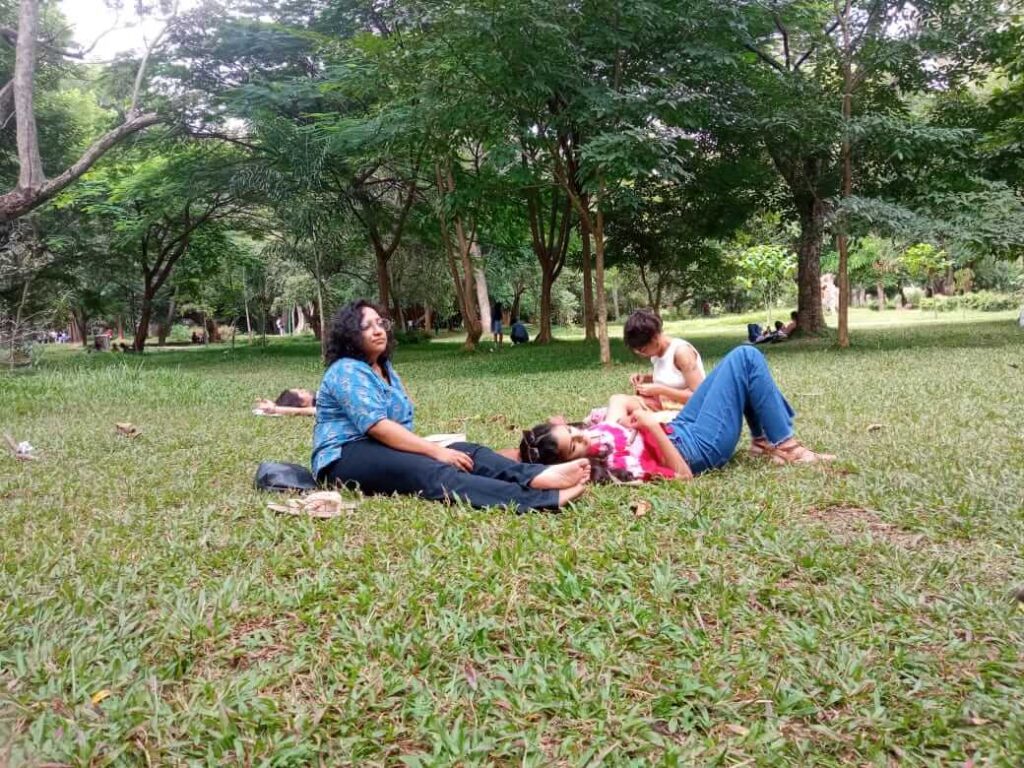
Photo: Anagha Rajesh
Spaces women want
While this struggle for safety continues, it minimises or invisibilises other aspects about women and cities such as comfort, pleasure, belongingness, or simply being free. This is not merely the freedom from sexual violence but the freedom to move around a city or occupy spaces at will, be comfortable in them, access opportunities in education or work or leisure, have diverse cultural experiences, and feel liberated.
Such cities have to be planned and built with explicit purpose, created by deliberate policies and design of neighbourhoods, transport services, workplaces, creches and senior care centres, streets and public spaces. They call upon planners and architects – usually men – to see cities and spaces from the gender lens. This is not common – yet. Such cities are called feminist cities.
It’s a term that shocks or annoys many but it simply means cities in which women have had a say in the making, cities that accommodate women’s needs, cities with spaces and systems for the caregiving work that women do like errands to school and hospitals, cities that offer safety but also the opportunity to be the best versions of themselves. Feminist cities, unfortunately, are still seen as an exception; the massive city-making exercise continues in the dominant masculine way.
“…the rush hour in London was never meant to accommodate my needs as a mother. Indeed, very little about the city was,” wrote Leslie Kern, feminist urban geographer who realised the startling ways in which cities fail women as a new mother 25 years ago, “I was, of course, far from the first person to have this revelation. Feminist urbanists[8] have been trying to address the wilful ignorance of women’s needs, lives, bodies and routines since at least the 1970s.”[9]
If women speaking out for years has not seen a dramatic shift in the planning and design of cities, then more women should literally plan and design them. Some of us* intervened in Mumbai’s Development Plan 2034 to collectively demand that the gender lens be applied to land use. This led, finally, to the DP reserving plots in each of the city’s 24 wards for a multi-purpose centre which will have transit accommodation for women migrants, daycare centre, skills centre, elder care centre. The first of these opened on the International Women’s Day this March.[10]
These are baby steps considering the tall task ahead. Similar and appropriate policy interventions will have to be made in housing, transport, design of streets and public spaces like parks and gardens, bus stops and routes, train and metro stations, subways and so on. While safety is a necessary goal to be pursued, women’s accessibility to spaces and services, and their affordability, determine how comfortable and belonged they feel.
In mobility, for example, safe, comfortable, accessible and affordable multi-modal transport across a city that accounts for women’s needs is essential. Are the transport hubs well-lit and designed to have ‘eyes on the street’? Is the last-mile connectivity to the workplace and home available at all times of day and night? Is this route well-lit and free of alcohol-guzzling groups of men? Is the travel mode affordable? Do the routes account for women’s need for complex trip-chaining in which, for example, women return home from work after picking up children from school or classes and shopping along the way compared to linear home-work-home trips that most men make?
Affordable urban infrastructure or gender-sensitive policies bring women out of homes and open a world of possibilities. See the impact of free bus travel offered in Delhi in 2019 followed by Karnataka, Telangana, Andhra Pradesh, Punjab on women’s lives and mobility, the space they rightfully came to occupy, their increased visibility and all this positively impacting safety.[11] [12]
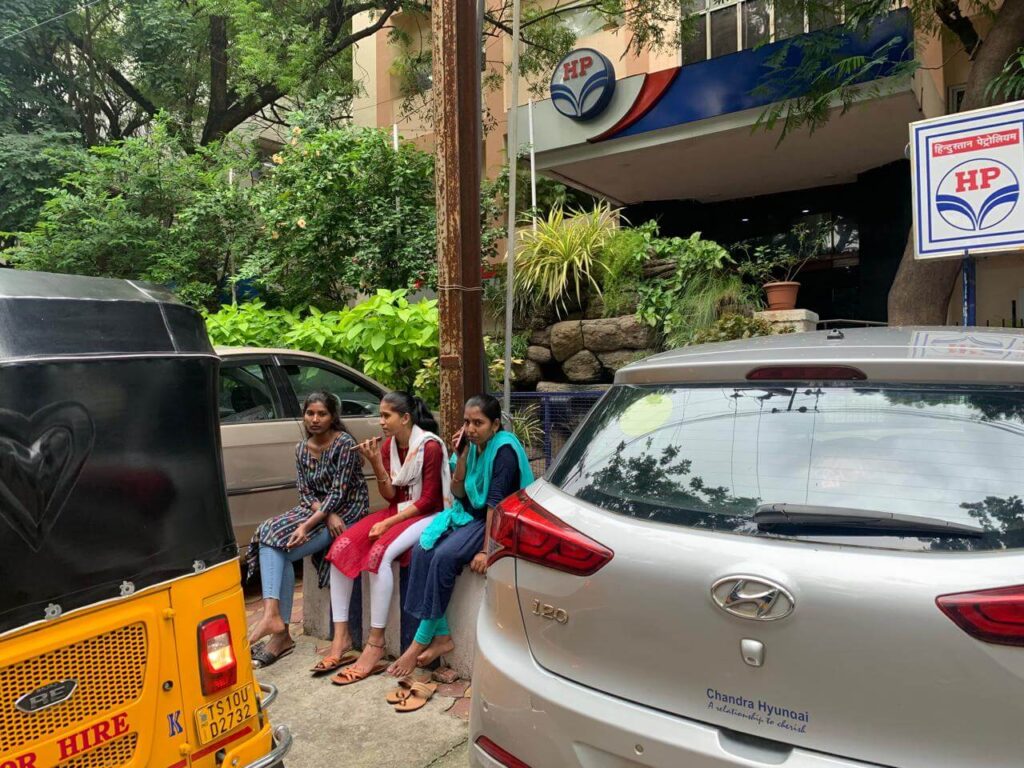
Photo: Shobha Surin
The Gendered City is an attempt, through an atlas using interactive feminist data to promote gender-responsive design.[13] This includes features like safe walking paths, inclusive public spaces, and accessible public transportation options that cater to diverse gender needs. To be launched this month, the Feminist Urban Atlas focuses on six areas: gender-specific data collection, safety mapping, accessibility insights, intersectional analysis, public facility mapping, and policy recommendations.
The core of feminist cities is to plan and design cities in ways that make women feel at ease without being conscious of their gender and its implications.
Gendered cities or not?
The debate over gendered cities and spaces – segregated from the general or men’s spaces – is open. Women’s lived experiences show why gendered spaces such as separate coaches in trains and metros or separate queues for services are safer and more comfortable. Yet, at a fundamental societal level, gendered spaces only entrench the idea that women are safer and comfortable when removed from men, that segregation is sine qua non.
This is the conundrum that feminist cities address. If cities, public spaces and services are designed and built to accommodate the needs of women, then gendered spaces may not be needed in the future. Because spaces are designed to hold women, because there’s greater acceptance of all kinds of women, because men will learn to respect women in public spaces, because basic procedures for safety and comfort have been followed in public and private spaces, because existing laws have been implemented.
This point of social transformation, however, seems a long distance away. Till then, there is a case to be made for gendered spaces. For example, the Sexual Harassment of Women at Workplace (Prevention, Prohibition and Redressal) Act,[14] commonly called the PoSH Act, has shown gaps in implementation since it came into force in December 2013[15] So, if gendered spaces in workplaces prevent sexual harassment and violence against women, it may be a short-term need.
Similarly, gendered spaces in transport modes, access to services, recreation areas may be needed till the transformation in society accepts women as equal and transformation in planning makes feminist cities. In the long run, feminist cities and spaces should, ideally, make segregated and gendered spaces redundant. We can hope.
*The writer was part of the Women and DP Group that led the advocacy and had, earlier, collaborated with Akshara, as Senior Editor of HT, to evolve the Comprehensive Action Plan.
Smruti Koppikar is a Mumbai-based award-winning journalist, urban chronicler, and media educator. She has more than three decades experience in newsrooms in writing and editing capacities, she focussed on urban issues in the last decade while documenting cities in transition with Mumbai as her focus. She was a member of the group which worked to include gender in Mumbai’s Development Plan 2034 and is the Founder Editor of Question of Cities.
Cover photo: QoC file photo

